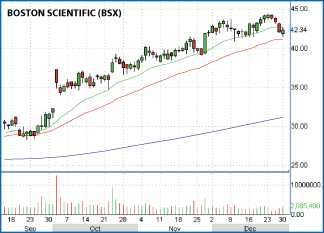TRADING TECHNIQUES
Trade Of The Light Brigade
Do Or Die Trading
by Bo Yoder
Bring consistency to your trading.
As any active trader knows, once a trade is initiated, the market will do everything in its power to convince you that you are an idiot who has just put on the worst trade in the history of mankind. The market will form little false starts and head-fakes, then go dead in the water as it tries to bore you to death. These whips and jiggles ask you constantly, "Are you sure about this trade?" and try to convince you to exit as the stock hacks and gasps its way toward your profit objective.
It takes great discipline and commitment to your trading plan to ignore these emotion-laden moves, and they will wreak havoc on your mental state if you're not prepared for them before you initiate the trade. This discipline and confidence in your trading style comes with time and experience. However, in working with my consulting clients, I have discovered a way to short-circuit this process and bring their trading to a new level of consistency. I call it "do or die" trading. More and more brokers are offering the ability to tie a series of orders together, bringing the "OCO" order (also known as "one cancels the other"), which futures traders have enjoyed for years, into the world of the equity trader.
An OCO order is a stop or limit order that is linked to another order on the broker's book. When one of the linked orders is filled, a cancel order is sent to take the other linked orders off the book. This helps reduce your stress, increases your consistency, and lets your broker earn a commission!

FIGURE 1: A CLEAR UPTREND. Here you see a stock that has pulled back to its moving average support, suggesting the uptrend will continue.
...Continued in the June 2003 issue of Technical Analysis of
STOCKS & COMMODITIES
Excerpted from an article originally published in the June 2003 issue of Technical Analysis of STOCKS & COMMODITIES magazine. All rights reserved. © Copyright 2003, Technical Analysis, Inc.
Return to June 2003 Contents